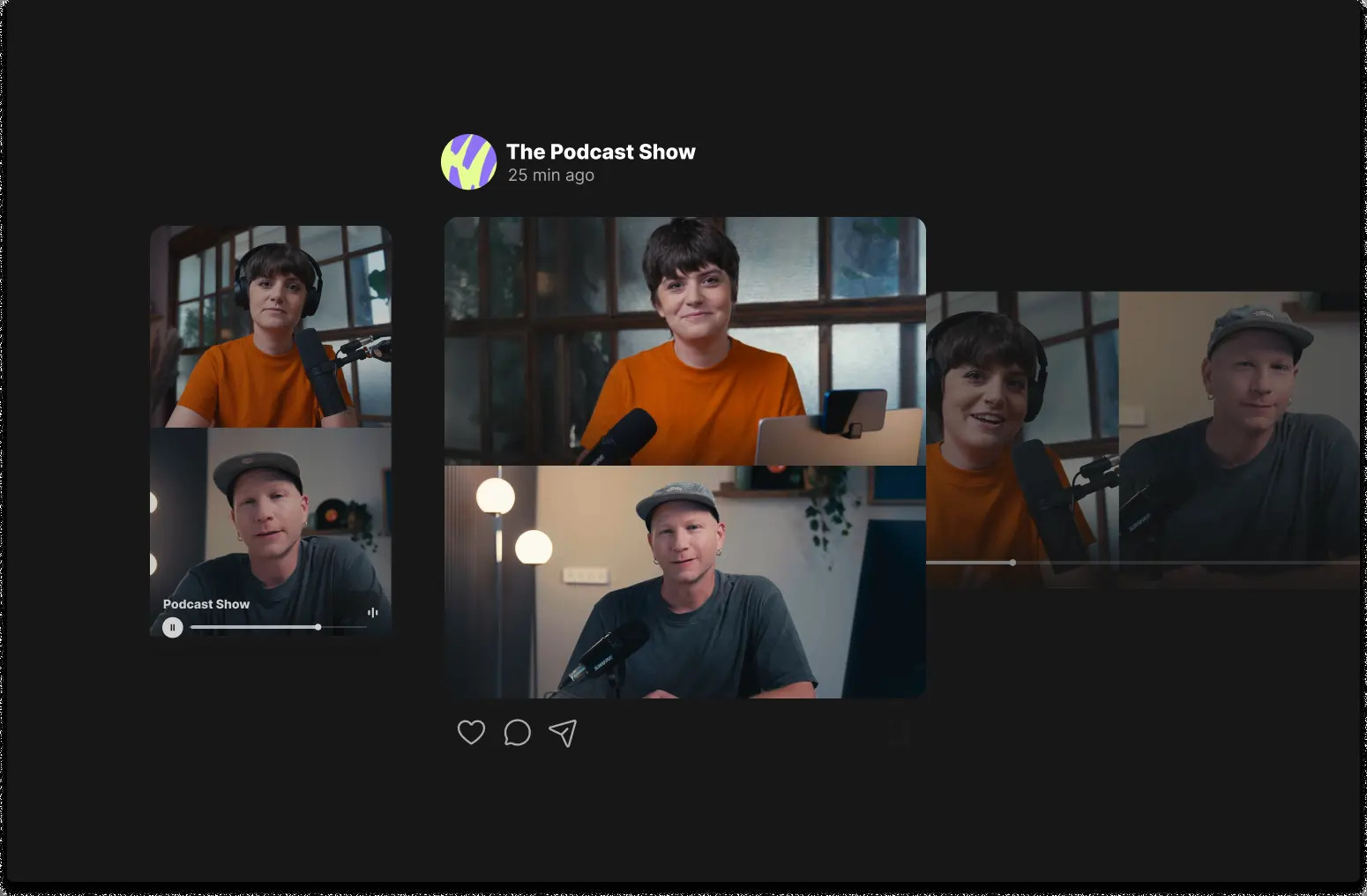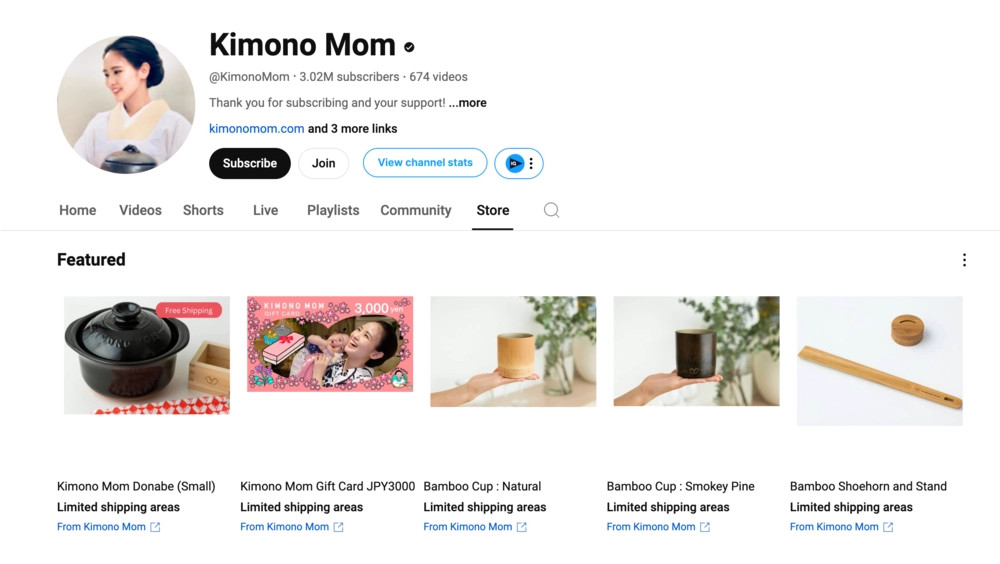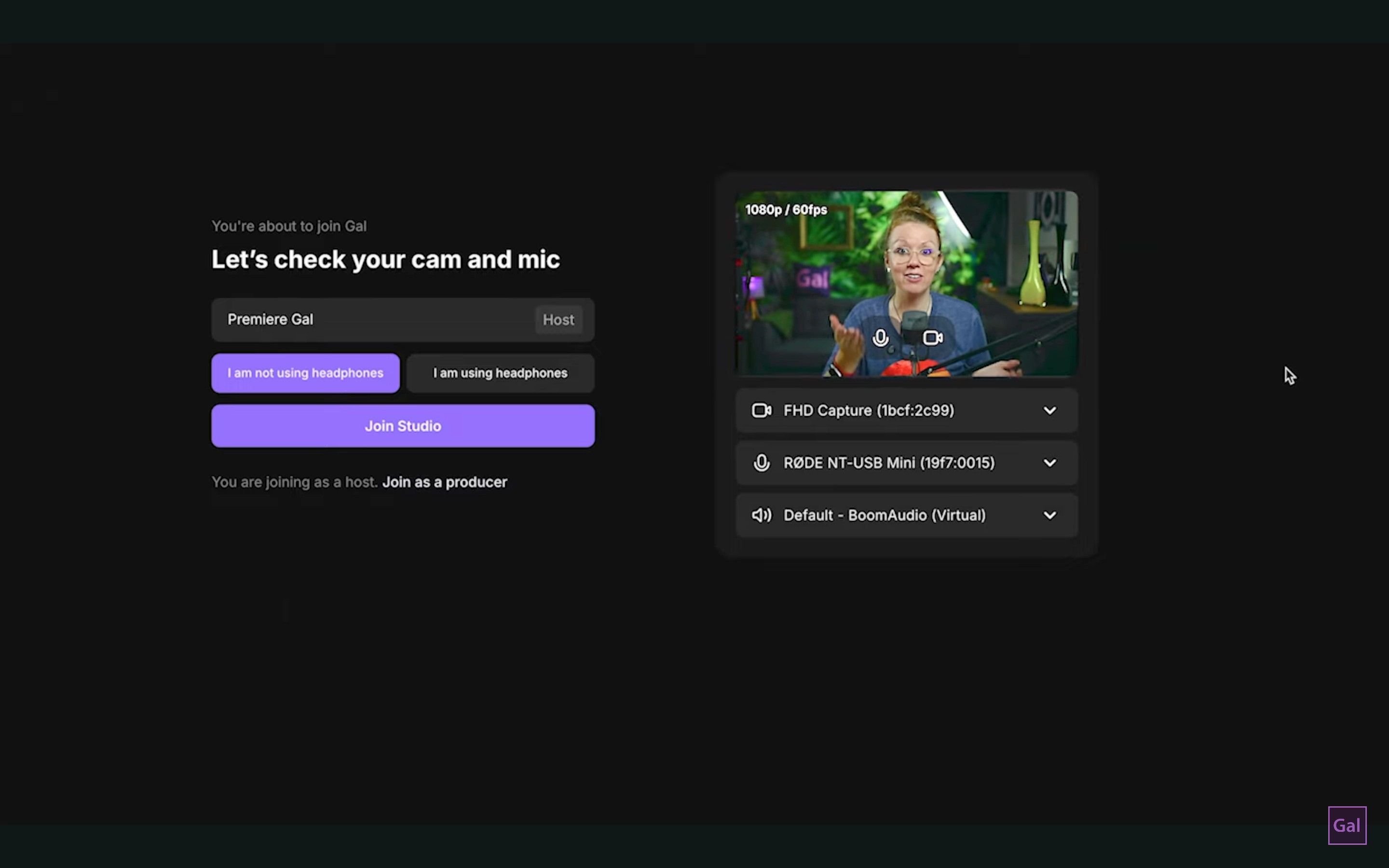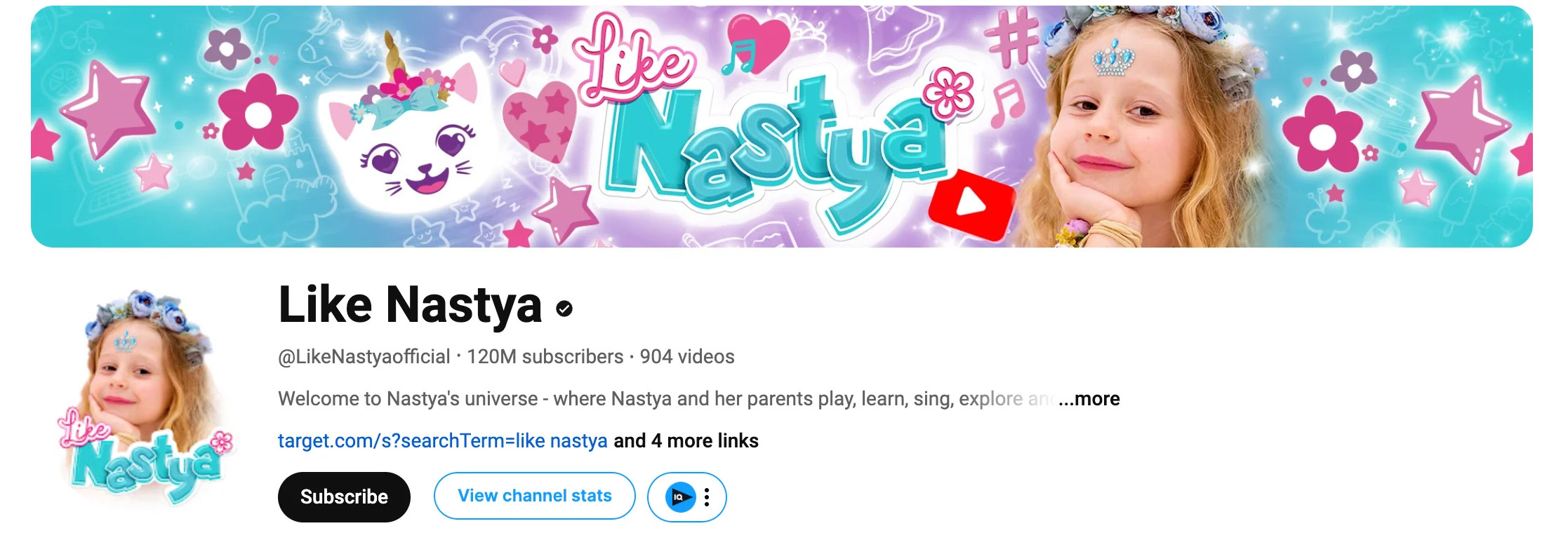Key takeaways
- Only a tiny fraction, 0.3%, of YouTubers achieve significant earnings of $5,000 or more per month. Even fewer reach millionaire status solely through YouTube.
- The primary monetization method on YouTube is the Partner Program (AdSense).
- Beginner YouTubers with around 1,000 subscribers can expect to earn between $30 and $300 monthly from AdSense.
- YouTubers with 100,000 monthly views can generate approximately $1,000 to $3,000 per month through AdSense.
- Reaching 1 million subscribers can unlock substantial earnings, potentially $10,000 or more per month.
- Successful YouTubers often diversify their income beyond ad revenue by pursuing brand sponsorships and affiliate marketing to maximize their earnings.
With YouTube’s immense popularity as a video-sharing platform, becoming a YouTuber and building a career around content creation has become an increasingly attractive prospect. The question on many aspiring creators’ minds is: just How Much Money Do Youtubers Make? The answer, as you might expect, is multifaceted. A YouTuber’s income isn’t simply a straightforward calculation; it’s influenced by numerous factors including subscriber numbers, video views, brand sponsorships, merchandise sales, and the ever-present ad revenue.
So, if you’re curious about how much YouTubers make, you’ve come to the right place. This comprehensive guide breaks down the earning potential of YouTubers at different stages of their careers and explores the various avenues they use to turn their passion into profit. If you’re an aspiring content creator eager to learn how to make money on YouTube, keep reading to uncover the secrets of how YouTubers convert views into income.
How Much Do YouTubers Make Based on Channel Size?
While a high subscriber count isn’t a direct guarantee of a specific income figure, it undeniably plays a crucial role in a creator’s earning potential. A larger subscriber base generally translates to more video views, increased clicks on affiliate links, and greater opportunities for lucrative sponsorships.
YouTube’s recommendation algorithm often favors channels with larger audiences, giving them an advantage in reaching even more viewers. Although factors like content niche, audience engagement, and monetization strategies are significant determinants of income, we can still examine potential earnings based on different channel sizes:
Beginner YouTubers: 1,000+ Subscribers
For YouTubers in the early stages, with a subscriber count exceeding 1,000, average monthly earnings typically range from $30 to $300. This figure can fluctuate based on factors such as their chosen niche and geographic location of their audience. Reaching the 1,000 subscriber milestone is a significant first step for any aspiring YouTuber. This achievement unlocks access to the YouTube Partner Program, enabling creators to begin implementing fundamental monetization strategies.
While 1,000 subscribers might seem like a relatively small number, it’s important to recognize that achieving this milestone is a considerable accomplishment. In fact, only about 9% of all YouTube channels have reached this level, meaning you’ve already outperformed a substantial 91% of all channels on the platform.
At this stage, with the majority of revenue likely derived from AdSense, the income potential remains relatively modest. Sponsorship opportunities are infrequent for channels of this size, although they are not entirely out of reach.
Mid-Range YouTubers: 100,000+ Subscribers
YouTubers who have cultivated a mid-range channel with over 100,000 subscribers typically see their monthly earnings climb to between $500 and $1,500. However, some in this category can achieve higher incomes, reaching $5,000 or more per month. Reaching the 100,000 subscriber mark is a significant leap into the realm of professional YouTubers. Notably, only 0.3% of YouTube channels ever reach this level of audience, making it a point where many creators begin considering content creation as a part-time or even full-time career.
Brand collaborations, paid partnerships, and sponsorships become more readily available at this stage. It’s also likely that at least one of a mid-range YouTuber’s videos has achieved viral status, further boosting their visibility and earning potential. Income within this subscriber bracket varies considerably based on factors such as content niche, video views, and the extent to which creators have diversified their revenue streams.
Famous YouTubers: 1 Million+ Subscribers
The highest-paid YouTubers globally all share one common trait: a subscriber base exceeding 1 million. At this level of audience size, monthly revenue generated solely from AdSense can range dramatically from $10,000 to an impressive $100,000. Individual videos from these channels can command earnings of anywhere between $20,000 and $50,000 each through sponsorships, brand deals, merchandise sales, and product promotions. Annual revenues for famous YouTubers are typically estimated to be in the millions of dollars.
Top-tier creators with a million or more subscribers often expand their presence across multiple YouTube channels rather than focusing solely on one. Many evolve into recognizable brands in their own right. Their substantial earnings often support entire teams of professionals, including video editors, scriptwriters, marketing specialists, and other personnel who contribute to maintaining and expanding their brand.
YouTube Stars: 50 Million+ Subscribers
At the pinnacle of YouTube stardom, with subscriber counts exceeding 50 million, earnings reach astronomical figures, with annual incomes reaching tens of millions of dollars. Globally, only a select group of around 30 YouTubers have surpassed the 50 million subscriber mark. These individuals are the platform’s true celebrities, enjoying a level of fame and financial success comparable to mainstream entertainers.
 Graph depicting how much YouTubers make from AdSense based on views and RPM
Graph depicting how much YouTubers make from AdSense based on views and RPM
What Are the Prerequisites for YouTubers to Start Making Money?
The most fundamental revenue stream for YouTubers is the YouTube Partner Program, often referred to as AdSense. This program allows content creators who meet specific eligibility criteria to receive compensation for the videos they upload to the YouTube platform.
To become a YouTube Partner and gain eligibility for monetization, creators must meet the following requirements:
- Achieve a minimum of 1,000 subscribers within the past year AND accumulate 4,000 valid public watch hours in the past year (excluding YouTube Shorts) OR reach 10 million valid public YouTube Shorts views within the last 90 days.
- Agree to and comply with YouTube’s Partner Program terms and conditions.
- Maintain a channel in good standing, without any active Community Guidelines strikes.
- Possess a valid Google AdSense account, linked to their YouTube channel.
- Successfully pass the YouTube Partner Program review and approval process.
The amount of money a YouTuber earns through AdSense is fundamentally tied to the number of views their videos receive. While this relationship might appear straightforward, understanding the monetary value of each view and how it translates into earnings requires a deeper dive.
Let’s break down the key metrics and calculations involved.
Understanding CPC and CPM in Relation to RPM
At its core, YouTube’s revenue sharing model allocates 55% of ad revenues to Partner Program members. Here’s a breakdown of the key advertising metrics:
- Cost Per Click (CPC): Some advertisers opt for CPC advertising, meaning they only pay when a viewer actively clicks on their ad, rather than simply viewing it.
- Cost Per Mille (CPM): Other advertisers utilize CPM advertising, paying a set amount for every 1,000 ad impressions. It’s crucial to note that these are ad impressions, not just video views. For an ad impression to count, a viewer must watch the ad for a minimum of 30 seconds, or for its entire duration if the ad is shorter than 10 seconds.
Both CPC and CPM are crucial components in calculating Revenue Per Mille (RPM). RPM is a key metric representing the amount of money a YouTuber earns for every 1,000 video views after YouTube has taken its share of the ad revenue.
Let’s illustrate this with a practical example:
Imagine your YouTube video garners 5,000 views.
- Half of these views result in monetized ad impressions with an average CPM rate of $10.
- 100 viewers actively click on ads displayed on your video, with an average CPC rate of $0.5.
Calculating your earnings:
- CPM Earnings: $25 (2,500 impressions x $10 / 1000)
- CPC Earnings: $50 (100 clicks x $0.5)
Total Earnings Before YouTube’s Cut: $25 + $50 = $75
Your Earnings After YouTube’s 45% Revenue Share:
$75 x 0.55 = $41.25
Therefore, your RPM in this scenario is:
$41.25 / 5 = $8.25 per 1,000 views
While an RPM of $8.25 might not seem exceptionally high, it’s a solid starting point. To put it into perspective, if you consistently achieve 5,000 views per day with this RPM, your monthly earnings would approximate $1,238 per month. Whether this income is sufficient depends on the time and effort you invest in content creation and your overall financial goals.
How YouTube Monetization Works: 4 Key Factors Affecting YouTuber Income
While video views are undeniably a primary driver of YouTube earnings, numerous other factors significantly influence a YouTuber’s income.
Let’s delve into some of the key elements that can have a substantial impact on how much money YouTubers make:
Video Length
Longer videos offer greater potential for ad placement, directly increasing potential ad revenue. Pre-roll ads (appearing at the beginning of a video) and mid-roll ads (inserted at intervals throughout longer videos) typically command higher payouts compared to post-roll ads (playing at the end of a video).
However, video length is a nuanced factor that also affects viewer engagement. While longer videos can accommodate more ads, they may also deter some viewers if they are not engaging or well-paced. Shorter, more concise videos can be effective in attracting new viewers and growing subscriber numbers more rapidly. Content creators need to strategically balance video length based on their content style, target audience preferences, and engagement goals.
Content Type
Certain content categories lend themselves more effectively to long-term monetization. For example, tutorial videos, such as “How to change your car battery,” can attract consistent views over many years, generating sustained ad revenue. Evergreen video content, characterized by its enduring relevance and appeal, often results in higher watch times, positively impacting ad impressions and overall earnings.
In contrast, content formats like podcasts and live streams, particularly those focused on trending or time-sensitive events, can generate significant short-term revenue and social media buzz. These formats can be excellent for driving subscriptions to a YouTube channel, but their viewership and associated ad revenue may decline quickly once the event or trend subsides.
 Chart showcasing different types of content and their monetization potential
Chart showcasing different types of content and their monetization potential
Niche and Demographics
The content niche a YouTuber operates in and the demographic makeup of their audience significantly influence advertiser interest and ad rates. Niches such as technology, finance, and business typically attract higher advertising bids, resulting in better CPC and CPM rates for creators in these categories. Conversely, content categories like cooking, travel vlogs, or humor channels may be associated with lower average RPMs.
Audience demographics also play a crucial role. For instance, gaming content often appeals to younger audiences who may be less likely to make online purchases or actively engage with ads by watching them in their entirety without skipping. Understanding audience demographics and tailoring content to advertiser-friendly niches can be a strategic factor in maximizing YouTube earnings.
Geographic Location
The geographic location of a YouTube channel’s viewership has a direct impact on ad revenue. Advertisers are generally willing to pay higher rates to reach audiences in affluent, high-spending regions such as North America and Europe. However, market size is also a critical consideration – countries with larger populations of YouTube users naturally offer a broader potential audience for video content.
With a substantial 247 million high-paying users, the U.S. market remains one of the most attractive for advertisers. However, emerging markets like India should not be overlooked. With a massive user base of 467 million active users, India rivals the combined user populations of Europe and the U.S.
This global audience dynamic is why many successful YouTubers strive to make their content accessible to a worldwide audience by incorporating multilingual subtitles. Tools like Riverside facilitate this process by automatically generating captions and subtitles in over 100 languages, allowing creators to download them as SRT files and seamlessly integrate them into their YouTube videos.
Diversifying Income Streams: Beyond YouTube Ads
Full-time YouTubers typically adopt a diversified approach to income generation, recognizing that YouTube ad revenue is just one piece of the financial puzzle. Many successful YouTube creators derive a significant portion of their earnings from alternative income streams. Let’s explore some common methods YouTubers use to supplement their income:
Affiliate Marketing
Affiliate marketing is a widely adopted strategy for YouTubers to generate revenue.
Creators can strategically feature products relevant to their content and target audience, promoting them organically within their videos. They typically include affiliate links in their video descriptions, earning a commission ranging from approximately 5% to 50% for each purchase made through those links. It’s important to note that the YouTube Shopping feature, which facilitates product tagging and promotion, is currently available to channels with at least 15,000 subscribers.
While precise official statistics on affiliate marketing earnings for YouTubers are not readily available, anecdotal evidence and creator reports suggest that even channels with relatively smaller subscriber counts (under 50,000 subscribers) can generate substantial income through effective affiliate marketing strategies.
Personal Merchandise
YouTubers who have cultivated a strong and engaged community around their channel often capitalize on their brand recognition by selling personal merchandise. This can encompass a wide range of items, from general branded merchandise like mugs, t-shirts, and plush toys featuring their logos or catchphrases, to more specialized and unique product lines.
For example, Kimono Mom, a popular Japanese YouTuber with over 3 million subscribers known for her cooking and lifestyle content, successfully sells her own branded umami sauce and kitchen appliances through her online store.
 Kimono Mom showcasing her merchandise store and products, highlighting an alternative income stream for YouTubers
Kimono Mom showcasing her merchandise store and products, highlighting an alternative income stream for YouTubers
Channel Memberships and Crowdfunding
Channel memberships and crowdfunding platforms offer avenues for viewers to directly support their favorite YouTubers, creating recurring revenue streams for creators. YouTube’s Channel Membership feature allows viewers to become paying members of a channel for a small monthly fee, gaining access to exclusive perks. These perks can include custom animated Super Stickers for use in comments, priority placement for Super Chat messages during YouTube live streams, or early access to new videos before public release.
Recognizing that YouTube takes a 30% share of channel membership fees, some creators also utilize platforms like Patreon to cultivate direct financial support from their audience through tips, donations, and subscriptions. Paying members on Patreon often receive exclusive content, behind-the-scenes access, or personalized interactions as a token of appreciation for their loyalty.
For example, the gaming YouTuber Josh Strife Hayes publicly acknowledges and thanks his Patreon supporters by displaying a comprehensive list of their names at the end of his videos, fostering a sense of community and appreciation.
Digital Products and Business Services
Some YouTubers strategically leverage their channels as an integral component of broader business and marketing strategies. They utilize their platform’s visibility to create content that showcases their expertise and authority in a specific niche, effectively marketing their consulting, coaching, or other business services.
Neil Patel, a renowned figure in the digital marketing industry and owner of a prominent digital marketing agency, exemplifies this approach. With a YouTube channel boasting over 1.29 million subscribers, he consistently posts concise, informative videos on search engine optimization techniques, digital business strategies, and online marketing advice, seamlessly supporting his overarching business objectives and brand building.
Brand Sponsorships
Brand sponsorships represent a significant income source for popular YouTubers. Creators with substantial influence and engaged audiences often secure brand deals and partnerships to promote products and services. These collaborations can manifest in various forms, ranging from subtle product placements within videos to comprehensive integrated brand campaigns.
Highly influential YouTubers may also be compensated for extending brand campaigns to other social media platforms or participating as speakers or representatives at industry events and conventions. Payment structures for brand sponsorships vary considerably based on factors such as the YouTuber’s popularity, content niche, audience demographics, and the scope and nature of the collaboration.
For instance, Riverside, a platform for remote video and podcast recording, recently partnered with Premiere Gal, a well-known YouTuber with over 500,000 subscribers specializing in creative video editing tutorials. This collaboration exemplifies how brands strategically align with relevant YouTubers to reach targeted audiences.
 Premiere Gal promoting Riverside in her YouTube video, demonstrating a brand sponsorship example
Premiere Gal promoting Riverside in her YouTube video, demonstrating a brand sponsorship example
Who Are the Highest-Paid YouTubers in 2024?
To gain a clearer understanding of the upper limits of earning potential on YouTube, it’s insightful to examine the income figures of some of the platform’s top earners. Below is a list of the top 10 highest-paid YouTube stars in 2024. It’s important to note that annual income figures are approximate estimates based on publicly available data and industry reports.
.png)
MrBeast
Channel: @MrBeast
Subscribers: 314 million
Content Focus: Challenges, Philanthropy
Estimated Annual Income: ~$700 million
 MrBeast, the highest-paid YouTuber, known for his challenge-based content and philanthropy
MrBeast, the highest-paid YouTuber, known for his challenge-based content and philanthropy
James Stephen Donaldson, globally recognized as MrBeast, reigns as the undisputed king of YouTube earnings. As the first creator to surpass 300 million subscribers, his staggering estimated annual income of $700 million is truly remarkable. His channel is renowned for its elaborate giveaways, high-production challenges, and philanthropic endeavors. MrBeast also commands a massive following on TikTok, with over 103 million subscribers, making him the third-most-followed creator on that platform as well.
Jeffree Star
Channel: @jeffreestar
Subscribers: 15.8 million
Content Focus: Makeup, Beauty, Vlogs
Estimated Annual Income: ~$200 million
Despite having a comparatively smaller subscriber count than other top YouTubers, Jeffree Star consistently ranks among the highest-earning personalities on the platform. A multifaceted talent as a singer, songwriter, model, fashion designer, and makeup artist, Jeffree Star’s primary source of wealth is Jeffree Star Cosmetics, the highly successful makeup and cosmetics company he founded in 2014. His cosmetics empire alone generates an estimated $100 million in annual revenue, contributing to his lavish lifestyle, including his $14.6 million mansion in Hidden Hills, California.
Like Nastya
Channel: @LikeNastyaofficial
Subscribers: 120 million
Content Focus: Kids’ Content, Toy Reviews, Edutainment
Estimated Annual Income: ~$106 million
 Like Nastya, one of the highest-earning children on YouTube, creating content for kids and families
Like Nastya, one of the highest-earning children on YouTube, creating content for kids and families
Anastasia Sergeyevna Radzinskaya, known to her global audience as Like Nastya, is a remarkable example of YouTube success at a young age. At just 10 years old, she is recognized as one of the wealthiest children in the world. Her YouTube channel boasts an impressive 120 million subscribers and is considered the most profitable kids’ content channel worldwide. Estimates of her annual earnings vary, ranging from $30 million to a staggering $260 million. Nastya’s content is characterized by its simplicity, fun, and educational value, featuring songs, playful scenarios, and toy unboxing videos aimed at children and families across the globe.
FAQs About How Much Money YouTubers Make
Who is the highest-paid YouTuber in the world?
As of 2024, MrBeast (Jimmy Donaldson) holds the title of the highest-paid YouTuber globally, with an estimated annual income of $700 million. Despite facing occasional controversies, his popularity and viewership continue to surge. Each MrBeast video routinely garners around 100 million views, generating millions in ad revenue and brand partnership earnings.
Can YouTubers make money through channel memberships and Patreon?
Yes, YouTube provides the Channel Membership feature, enabling viewers to directly support their favorite creators through recurring monthly subscriptions in exchange for exclusive content, badges, and other perks. Additionally, YouTubers can leverage crowdfunding platforms like Patreon to cultivate membership-based communities and receive direct financial contributions from their fans.
What is YouTube Premium and how does it impact YouTuber earnings?
YouTube Premium is a subscription service that offers viewers an enhanced viewing experience, including ad-free video playback, background playback on mobile devices, and access to YouTube Music Premium. Crucially, YouTubers are not penalized when viewers watch their content through YouTube Premium. Instead, creators still earn revenue from Premium subscribers based on the watch time their content accumulates within the Premium ecosystem. This provides an alternative revenue stream based on viewer subscriptions rather than ad views.
Do YouTubers earn differently from YouTube Shorts compared to regular long-form videos?
Yes, YouTube Shorts monetization operates on a slightly different model compared to traditional long-form videos. YouTube Shorts utilizes a dedicated Shorts Fund, which aggregates revenue from ads displayed between Shorts videos in the Shorts feed. This fund is then distributed to eligible creators based on factors such as viewership, engagement, and content originality, rather than the direct ad revenue sharing model used for regular videos.
How much does a YouTuber with 1 million subscribers realistically make?
In a hypothetical scenario where all 1 million subscribers watched a new video each week, annual earnings could theoretically reach $950,000. However, a more realistic estimate for a YouTuber with 1 million subscribers typically ranges from $40,000 to $500,000 annually. This wide range reflects the variability of factors influencing income, including video upload frequency, audience engagement levels, viewer demographics, content niche profitability, and diversification of income streams beyond AdSense.
How many YouTube subscribers are needed to earn $2,000 per month?
Approximately 400,000 to 800,000 monthly video views could potentially generate $2,000 in ad revenue, based on average RPM rates. However, it’s important to emphasize that there’s no fixed subscriber count that directly translates to a consistent $2,000 monthly income. Earnings are influenced by numerous factors beyond subscriber numbers, including affiliate marketing commissions, brand sponsorship deals, merchandise sales, and other revenue diversification strategies. With successful brand collaborations, even channels with a more modest subscriber base of 15,000 to 20,000 can realistically achieve this income level.
Is being a YouTuber a high-paying career?
For a select few at the very top, being a YouTuber can be an exceptionally high-paying career, comparable to the earnings of movie stars or professional athletes. These top-tier creators can command millions of dollars annually. However, it’s crucial to acknowledge that the vast majority of YouTubers earn far more modest amounts, and many earn little to no income from the platform. To put it in perspective, only approximately 0.3% of YouTube channels have reached the 100,000 subscriber milestone or higher. Therefore, while the potential for significant financial success exists, becoming a lucratively high-paid YouTuber is a reality for only a small fraction of creators.